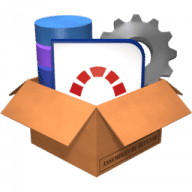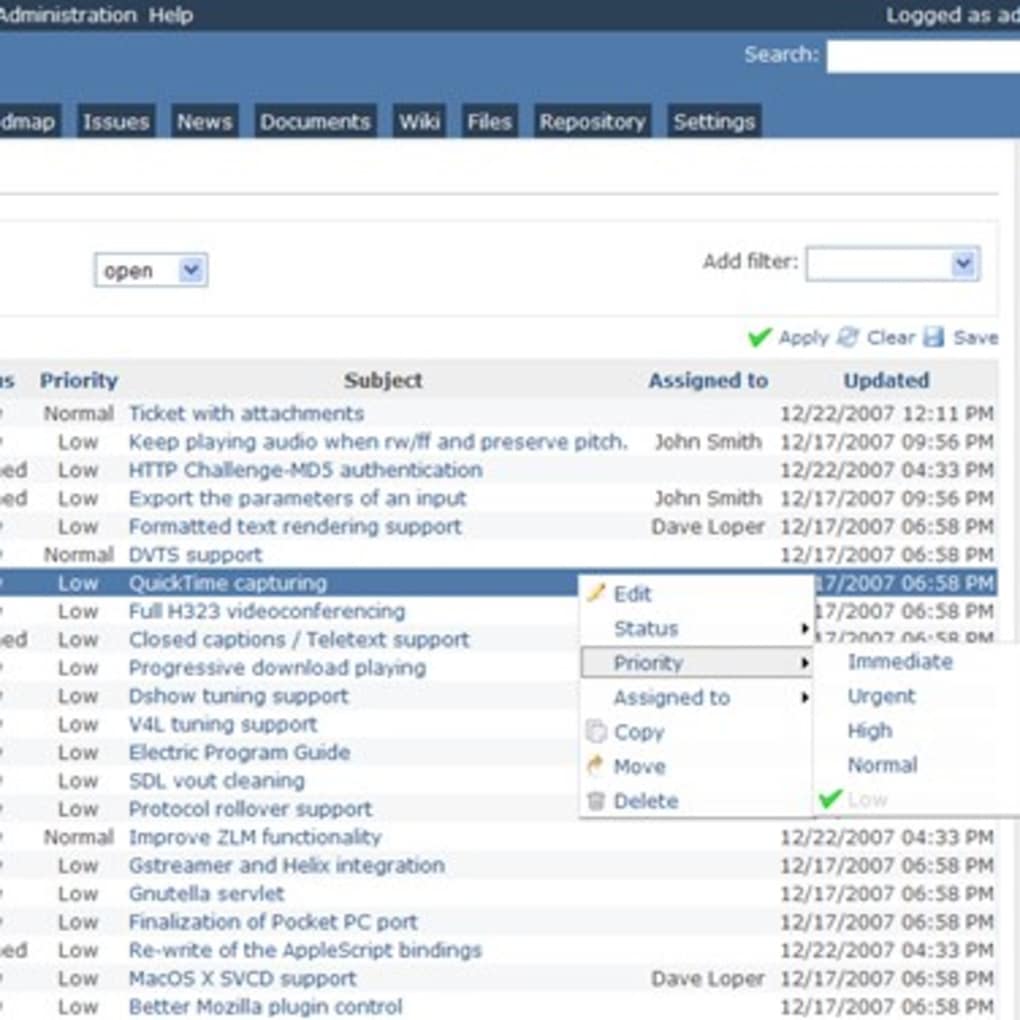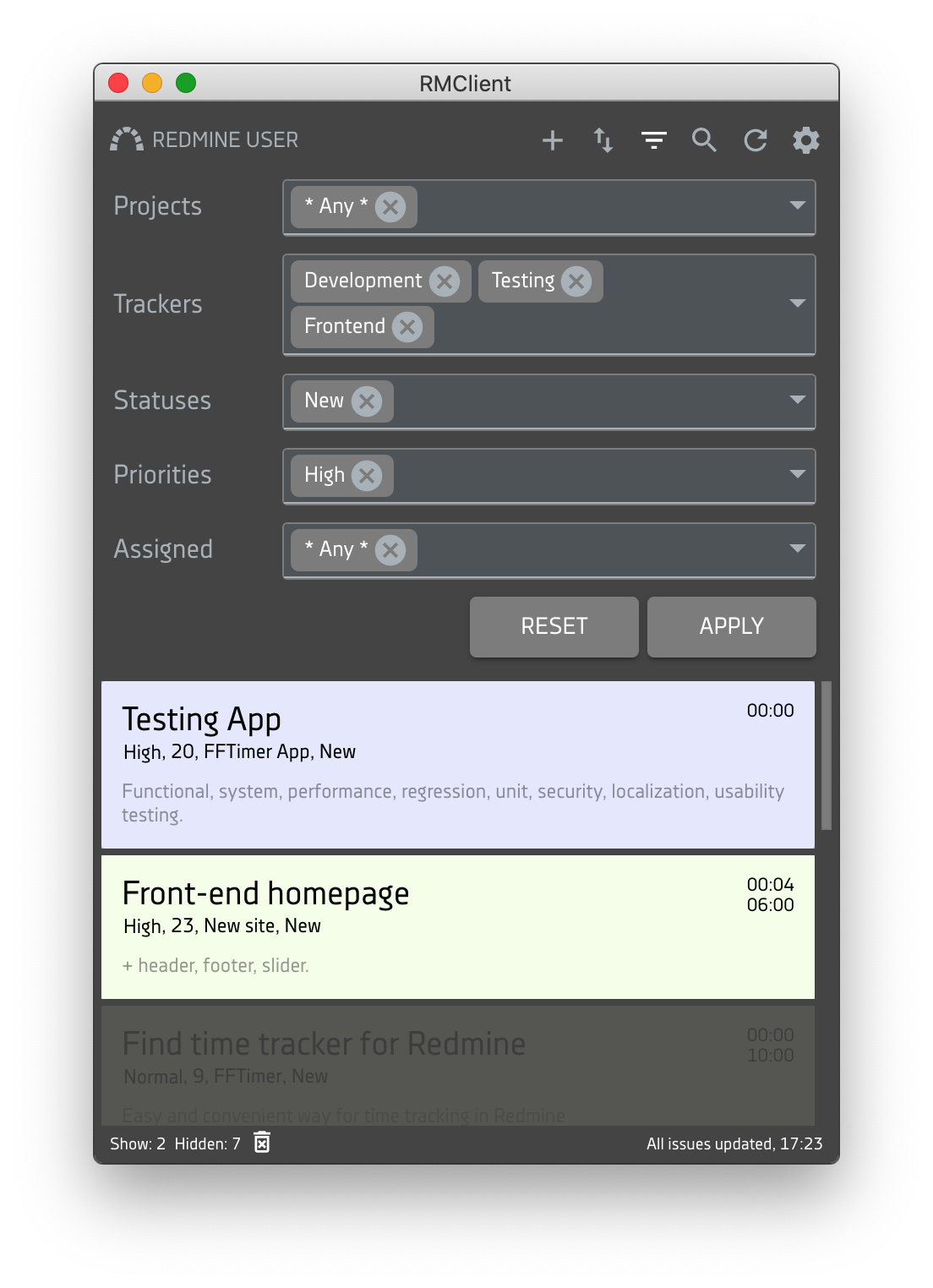Try out using webrick This is a quick summary of the necessary steps for a simple install of Redmine on Apple OS X Snow Leopard Server 10.6.4 (or 10.6.7). There is a slightly different install for Lion Server. It is meant only as a supplement, not a replacement, to the official install guide found here. RMClient is available as a trial version during 30 days and comes with a fair price afterwards. The app is compatible with Redmine 1.3.x - 2.x and is available for Windows, Mac OS and Linux. Redmine is a very popular Rails-based open source bug tracker to help you manage issues and tasks for multiple projects. It is extremely flexible, features a built-in wiki, time tracking, custom fields, role-based access, SCM integration (including git), and support for multiple projects. Redmine has many of the same features you'd find in an enterprise bug tracking system, but of course it's.
Hi Redmine users!
We are excited to announce a new project we've been working on: Redmine-VM for Mac. This new type of installer makes it really easy to run Redmine for Linux on your Mac with just a few clicks. No VirtualBox needed!
For this first version, we've focused on making it really easy to:
- Access and edit files by mounting them on the Mac desktop
- Access phpMyAdmin and other applications over a secure tunnel with a single-click
- Configure and prepare your Redmine stack on Linux, often closer to production
In addition to the changes 'under the hood', there is a new stack manager interface:
This provides a central control point to start or stop services, manage port forwarding, work with files and run commands.
Getting started
To get started with the new stack manager, launch it as usual and click the 'Start' button to start the hypervisor. This will also start all the Redmine-VM services.
Redmine For Mac Os X
You can also manage individual services from the OS X tray:
What's new: port forwarding and mounted volumes

The stack manager provides a graphical interface to forward ports between Redmine-VM and the host system. It comes with a pre-defined rule to forward Redmine-VM's port 80 to port 8080 on the host. So, you can now access phpMyAdmin (and other Web applications running on Redmine-VM) by browsing to port 8080 on your host - for example, http://localhost:8080/phpmyadmin. You can also add your own port forwarding rules between the host and Redmine-VM through the same interface.
You can now mount Redmine directories and copy or move files between your host and Redmine using the Finder. The 'Volumes' tab of the stack manager lets you mount and explore directories.
It's now even easier to run commands on Redmine-VM. From the stack manager page, click the 'Open Terminal' button and you'll be logged in to a Redmine-VM console with full root privileges.
You can take the new Redmine-VM for a test drive here.
Don't forget to post a comment to tell us what you liked (or disliked) about it. And remember that installer versions of Redmine for OS X can be downloaded from the downloads page.
Instructions for the server edition are here.
Since Mac OS X doesn't have the 'Server Admin' application, you'll need to start & configure MySQL manually from the command line. If you have the MySQL Preference Pane installed in the System Preferences, you can start/stop MySQL from there.

Alternatively, if you are installing for a development environment only, you can use another instance of MySQL, such as those bundled with MAMP, MAPStack, XAMPP, the Acquia Drupal Stack Installer and other pre-compiled and packaged server stacks. To do this;
- Skip the steps about:
1.passenger-install-apache2-module
• Use webrick instead only if using for development environment only, passenger has better performance.
• You don't needgem install passengeror the Passenger preferences pane if using webrick.
2. Enabling MySql with Server Admin
3. Establishing defaults with rake and RAILS_ENV

Redmine Mac Os Install
- You may need to build your mysql gem if
sudo gem install mysqlfails. For example you may try the following depending on where you have mysql installed:sudo env ARCHFLAGS='-arch x86_64' gem install --no-rdoc --no-ri mysql -- --with-mysql-config=/usr/local/bin/mysql_configsudo env ARCHFLAGS='-arch x86_64' gem install --no-rdoc --no-ri mysql -- --with-mysql-config=/usr/local/mysql-5.1.34-osx10.5-x86_64/bin/mysql_config - You my need to download and install MySql binaries from the opensource.apple.com link in RedmineInstallOSXServer.
gemneeds this in order to build the ruby-to-mysql plugin. If you installed the developer's tools, this should be in place. - Start your server-stack and check the MySQL server is running
- Either;
1. Use the stack's phpMyAdmin or its equivalent tool to create the database and user, OR
2. Check thatmysqlon the command line points to the mysql binary for your stack (which mysql) and create a database and user as per RedmineInstallOSXServer. - Link Mac OS X's mysql socket to the stack's socket to trick Ruby into finding the right mysql instance:
sudo ln -s /Applications/acquia-drupal/mysql/data/mysql.sock /var/mysql/mysql.sock
- or -sudo ln -s /Applications/MAMP/tmp/mysql/mysql.sock /tmp/mysql.sock
- or -
In your config/database.yml add parametersocket: /path/to/socket.sock
- Start the Ruby web server with
ruby script/server webrick -e production.
If you set the development database settings inconfig/databases.yamlinstead of the production database settings, you can replace production with development in the above command. - Point your web browser at http://localhost:3000 if using webrick
Alternatively, follow the standard installation instructions at RedmineInstall, making the alterations suggested in the forum post 'Mac OS X - Snow Leopard installation notes' at http://www.redmine.org/boards/2/topics/17148.
There is a freely available all-in-one GUI installer for OS X that can be downloaded at http://bitnami.org/stack/redmine
See also the BitNami Redmine on OS X tutorial
